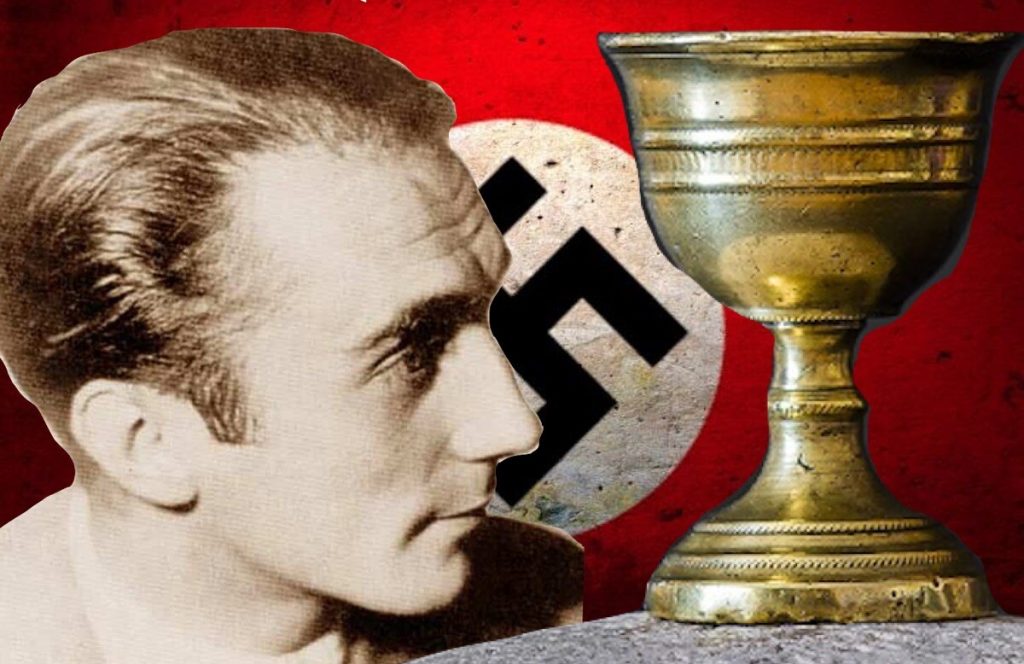Otto Rahn (1904 – 1939) lived a fascinating life. Born in Germany, he grew up with a fanatical interest in the legends of his native country. As he grew older, his interests branched out into the lore of various parts of Europe, especially the stories surrounding the hidden European location of the Holy Grail. He was influenced specifically in Grail legend by the epic French medieval poem “Perceval” and, possibly, by Wagner’s 1882 opera “Parsifal” based on the same story.

As a young man, he decided to search for the Grail, using “Perceval” as his primary source of information. Following this path, he journeyed in the early 1930s to France. He believed that a medieval heretical Christian group called “The Cathars” hid the Grail in or near Montsegur Castle in the southwest of France. After much exploration, he did not find the Grail, but he did come across an intriguing network of caverns. He wrote a book about his unfruitful search and proclaimed that he would continue looking.
Unexpectedly, one of the readers of the book was Heinrich Himmler, the head of the Nazi SS. Himmler wanted Rahn to keep searching for the Grail and offered to pay for a continued search. Rahn was hesitant, as he did not agree with most of the Nazi ideals. But he needed funding to continue his search; and, as Rahn told a friend: “What was I supposed to do? Say no to Himmler?”
Related: Did Knights Templar Hide the Holy Grail in Iceland?
Rahn spent the next few years crisscrossing Europe in search of the Grail.
Time passed without success and the government eventually became impatient. That, as well as other factors (Rahn was openly homosexual and was possibly Jewish in his mother’s family ancestry), caused the SS to remove him from his Grail quest and reassign him to security tasks at the Dachau concentration camp.
Rahn was dismayed at no longer pursuing what he felt was his life’s work and he was horrified by what he saw at Dachau. In a February 1939 letter to an official of the SS, Rahn wrote: “I must ask you to [accept] my immediate discharge from the SS. The reasons…are of so grave a nature that I cannot explain them in writing.”
Rahn was soon to learn that one does not just resign from the SS. Word got to him that members of the Nazi hierarchy were looking to bring him in for disciplinary action. Rahn quickly fled and managed to disappear.
There was no sign of him until March 13, 1939, when his frozen corpse was discovered on the side of a deserted mountain in Austria.
How did he get there? Was he trying to leave Nazi-controlled territory? How exactly did he die? There were no clear-cut answers, so, after some behind-the-scenes discussions, it was officially stated that Rahn had taken his own life.
But it seemed to many people that exposure to the elements was an odd kind of suicide.
As often happens when a notable person dies from mysterious causes, a conspiracy theory erupted. In this instance, rumors began saying that the frozen body was not Rahn’s, and that he actually went on to change his name and became an ambassador to Italy.
Regardless of the mystery surrounding his death, Rahn’s life would continue to fascinate. Some have alleged that Rahn was a germ of inspiration for the movie character Indiana Jones. And Nigel Graddon neatly summarized Rahn’s life and persona in a 2008 biography, calling Rahn an “academic, historian…medievalist…Grail hunter, sleuth, explorer…philosopher…mystic…[and] indecipherable and indefinable.”
Quite a résumé for a short (35 years) life.
Sources:
“Otto Rahn Memorial”, pulled 4-6-15.
“Otto Rahn”, Wikipedia, pulled 4-6-15.
“The original Indiana Jones: Otto Rahn and the temple of doom”, The Telegraph, pulled 4-6-15.